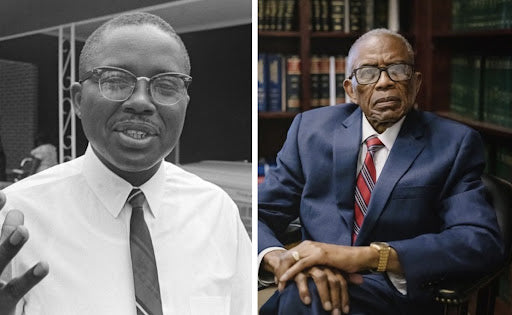He deserves his flowers now!
The iconic civil rights attorney, Fred Gray, whose client list has included Dr. Martin Luther King, Jr., Rosa Parks and Claudette Colvin, is still practicing law at 91 years of age.
According to the King Institute, Dr. King once referred to Gray as “the brilliant young Negro who later became the chief counsel for the protest movement.” Gray is a Montgomery, Alabama native who returned home after graduate school to open his own private law practice.
He provided legal counsel to Rosa Parks, King’s Montgomery Improvement Association, the local branch and state conference for the NAACP and the Montgomery Progressive Democratic Association. Gray’s expertise was critical in securing the desegregation of Montgomery buses and he even served as counsel for Claudette Colvin and Rosa Parks when they were charged with disorderly conduct for refusing to give up their seats to white passengers.
Gray continued his work to fight for civil rights throughout his whole career, fighting for voting rights, rights to education, freedom to march peacefully, the right for Black people to participate in juries and was a strong and vocal opposition to injustices like the Tuskegee syphilis experiment. Gray was eventually elected to the Alabama State Legislature in 1970, representing Tuskegee and making history as one of the first two Black officials to serve in the legislature since Reconstruction.
For his work, Gray received numerous awards including the American Bar Association’s Equal Justice Award in 1977 and the Southern Christian Leadership Conference’s Drum Major Award in 1980. In 2001, he was elected as the first African American president of the Alabama State Bar Association.
Gray has continued to practice law and on December 14th, the veteran attorney turned 91 years young. The Leadership Conference on Civil and Human Rights took to Twitter to celebrate the iconic lawyer, filmmaker Ava DuVernay reposting the tweet and sending her well wishes.
Thank you for your contributions, Mr. Gray. Because of you, we can
Photo Courtesy of Bob Fitch Archive/Stanford University Libraries/Nicole Craine/The New York Times

